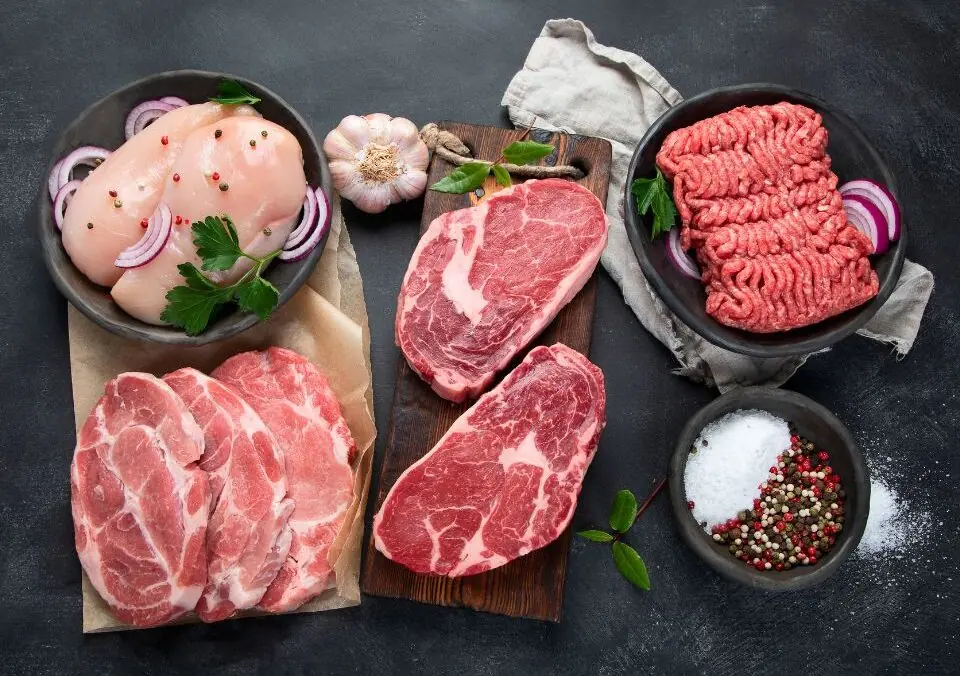Blog
Eat Your Meats!

When creating a healthy diet, it’s essential to incorporate a balance of fats, carbohydrates, and proteins. Each of these macronutrients provides our bodies with the necessary nutrients to remain energized and functional throughout the day. Among these, protein stands out as especially significant due to its vital role in the growth and repair of body cells. This article will delve deeply into the importance of protein, the differences between animal and plant-based sources, and provide tips for selecting and preparing meats healthfully.
The Importance of Protein
Protein is one of the three macronutrients and is composed of amino acids, which are the building blocks required by the body to perform numerous functions. Our bodies utilize proteins for building tissues, producing enzymes and hormones, and supporting immune function. Additionally, proteins can serve as a source of energy when carbohydrate stores are depleted.
Consuming sufficient protein has numerous benefits. It aids in muscle growth and repair, promotes satiety (which can be beneficial for weight management), and supports metabolism. As individuals age, muscle mass naturally decreases, a condition known as sarcopenia. Maintaining an adequate protein intake is crucial in helping mitigate this loss and promoting overall health.
Essential Amino Acids
According to registered dietician Amy Goodson, it’s vital to choose high-quality protein sources. A high-quality protein is defined as one that contains all nine essential amino acids, which are:
- Histidine
- Isoleucine
- Leucine
- Lysine
- Methionine
- Phenylalanine
- Threonine
- Tryptophan
- Valine
These amino acids are termed “essential” because the body cannot synthesize them on its own; therefore, they must be acquired through dietary sources.
Animal Proteins vs. Plant Proteins
Animal proteins are often regarded as complete proteins because they contain all nine essential amino acids in adequate amounts. Common sources of animal protein include:
- Meats (beef, pork, chicken, turkey)
- Fish and seafood
- Dairy products (milk, cheese, yogurt)
- Eggs
On the other hand, most plant proteins do not offer the complete range of essential amino acids. Examples of plant protein sources include beans, lentils, tofu, and quinoa. While some plant proteins, like quinoa and soy, are considered complete, it’s generally necessary for individuals relying on plant-based diets to combine different protein sources to ensure they receive all essential amino acids.

Tips for Healthfully Selecting and Preparing Meats
For meat lovers looking to include more protein in their diets, Goodson offers a series of tips to choose and prepare meats healthfully:
- Choose Lean Meats: Opt for lean cuts of meat such as chicken breast, turkey, or lean cuts of beef and pork. Ground meats should also be lean; look for options like 90% lean ground beef.
- Trim Excess Fat: While fat can enhance flavor, it is not always necessary. Trimming visible fat from meat before cooking can reduce overall fat intake.
- Use Lean Cooking Methods: Cooking methods such as grilling, baking, roasting, or broiling reduce the need for added fats. These methods help retain the natural flavors of the meat while keeping it healthy.
- Watch Your Portion Size: Moderation is key. The USDA Dietary Guidelines suggest a daily intake of approximately 5.5 ounces of protein for the average adult. This can vary based on individual dietary needs and activity levels.
The Role of Local Farming
In Arizona, countless farmers and ranchers produce high-quality meats that are raised locally. Supporting local agriculture not only provides fresh and nutritious options but also contributes to the local economy and promotes sustainable farming practices. You can find a variety of meats, including chicken, pork, beef, lamb, and goat, all sourced from local farms.
For those looking to purchase these animal proteins, websites like Fill Your Plate offer a plethora of resources. The platform recently updated its “beef” section, making it easier for consumers to locate locally raised beef products.
Nutritional Benefits of Different Meats
Each type of meat comes with its unique nutritional profile. Let’s explore some common types of meat and their benefits.
Beef
Beef is a rich source of high-quality protein and contains essential nutrients such as iron, zinc, and B vitamins, particularly vitamin B12. Iron from beef is heme iron, which is more readily absorbed by the body than the non-heme iron found in plant foods. The protein in beef can help support muscle growth and repair.
However, it’s crucial to choose lean cuts, such as sirloin or flank steak, to minimize saturated fat intake. Opting for grass-fed beef can provide additional omega-3 fatty acids, which are beneficial for heart health.
Chicken
Chicken, especially the breast, is a lean protein source low in fat. It is versatile, making it easy to incorporate into various dishes. It also provides essential nutrients, including vitamin B6 and niacin, which are vital for energy production and metabolism.
Cooking chicken using methods like grilling or baking helps retain its nutritious quality without adding excess fats.
Pork
Pork is another excellent source of high-quality protein that is often overlooked. Lean cuts, such as pork tenderloin, are low in fat while being rich in thiamine, selenium, and phosphorus.
Like beef, choosing lean cuts and trimming visible fat can help maintain a healthier profile.
Fish
Fish and seafood are not only rich in protein but often contain beneficial omega-3 fatty acids, which have been shown to support heart health and reduce inflammation. Fatty fish like salmon and mackerel can be excellent additions to a balanced diet.
Regular consumption of fish is associated with improved cardiovascular health and brain function. The American Heart Association recommends consuming fish at least twice a week for these benefits.
Balancing Proteins in Your Diet
While focusing on high-quality animal protein sources is beneficial, it is also essential to incorporate a variety of protein sources into your diet. This balance helps ensure you’re getting not only essential amino acids but also a broader spectrum of nutrients.
For those who choose to limit or avoid animal products, exploring alternatives such as legumes, nuts, seeds, and whole grains can provide adequate protein when combined thoughtfully. For example, pairing rice and beans provides a complete amino acid profile, making it a nutritious option for vegetarians and vegans (Harvard Health).
Conclusion: A Balanced Approach
When considering protein intake, it is crucial to strike a balance between quality and quantity. By focusing on lean, high-quality animal proteins while also including plant-based sources, individuals can optimize their nutrient intake for health and wellness.
Remember, moderation is essential, even with healthful foods. Paying attention to serving sizes and preparation methods can help maintain a healthy diet. Additionally, supporting local farmers not only promotes a healthier lifestyle but also strengthens the community and sustains local agriculture.
By choosing nutrient-dense protein sources and preparing meals with intentionality, individuals can enjoy flavorful dishes that contribute to overall well-being. For further resources on local meat purchases and healthy eating tips, check out the Fill Your Plate website.
By Heide Kennedy, Arizona Farm Bureau Communications Intern


















